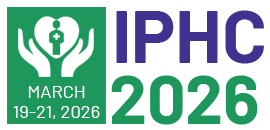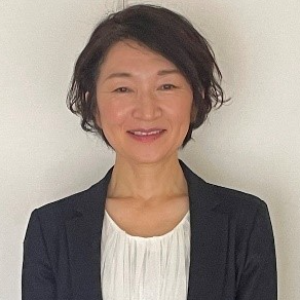Title : Social and emotional characteristics of 1- to 2-year-olds differences by age in months and gender using J-ITSEA and comparison with U.S. data
Abstract:
Introduction and Objective: In Japan, child-rearing anxiety among caregivers and child abuse have become major social problems. Childcare support tailored to the characteristics of young children is required. This study aimed to characterize the social and emotional problems and competencies of Japanese 1 – 2-year-olds by gender and by age (in months), and to identify differences with young children in the United States.
Design and Methods:?
Research Methods: Cross-sectional online survey
Participants: 1,000 infants aged 1 to 2 years without congenital diseases and their caregivers
Scale: Japanese version of the Infant-Toddler Social and Emotional Assessment (J-ITSEA), a self-administered questionnaire consisting of 170 items, 4 domains, 17 subscales, and 3 item groups. The J-ITSEA is designed to assess social and emotional problems in 12 – 35-month-old infants.
Data collection and analysis:?An online survey was conducted. The J-ITSEA domains, subscales, and item group mean scores were compared for gender differences, age differences, and differences between Japan and the U.S. IBM SPSS Ver. 28 was used for the statistical analysis.
Ethical considerations: Approval was obtained from the Ethical Review Committee of the affiliated university.
Results:?
1. Mean scores by gender: Boys tended to have higher Externalizing Domain scores, Activity/impulsivity, and Aggression/Defiance subscale scores, while girls tended to have higher Internalizing Domain scores, Separation Distress, Inhibition to Novelty subscale score, Competence Domain score, and all Competence subscale scores.
2. Mean scores by age group: Compared to other age groups, the 12 – 17-month-olds tended to score lower on the Aggression/Defiance Score of the Externalizing Domain, the Internalizing Domain score, the General anxiety and Inhibition to Novelty subscale score, Eating score of the Dysregulation Domain, Competence Domain score and all Competence subscales scores, and Social relatedness item Cluster score. On the other hand, the Sleep score and Atypical item Cluster score tended to be high. Separation Distress scores for 18 – 23-month-olds were higher than for 30 – 35-month-olds.
3. Average scores for Japanese and U.S. boys and girls: American children tended to score higher in the Aggression/Defiance and Peer Aggression subscale scores in the Externalizing Domain, Sensory sensitivity subscale score in the Dysregulation Domain, and the Competence Domain. Competence Domain, and all subscale scores of the Domain score and all subscale scores of the Competence Domain. Japanese girls tended to have higher Internalizing Domain scores, Depression/withdrawal, and Separation Distress subscale scores than U.S. girls, and Japanese boys tended to have higher Depression/withdrawal and Inhibition to Novelty subscale scores than the U.S. boys.
Conclusion:
It was found that Japanese boys tend to have problems in the externalizing domain and girls in the internalizing domain, that problems in the externalizing and internalizing domains tend to increase with age in months, and that competence tends to increase with age in months.
U.S. toddlers tended to have problems in the externalizing domain and higher in the competence domain, while Japanese toddlers tended to have problems in the internalizing domain.
Audience Take Away:
- The characteristics of social-emotional and competence problems of 1-2 year olds in Japan are presented.
- Comparing data from different countries can help to understand the social-emotional characteristics of 1-2 year olds.
- Help to improve support for caregivers according to age and gender.



